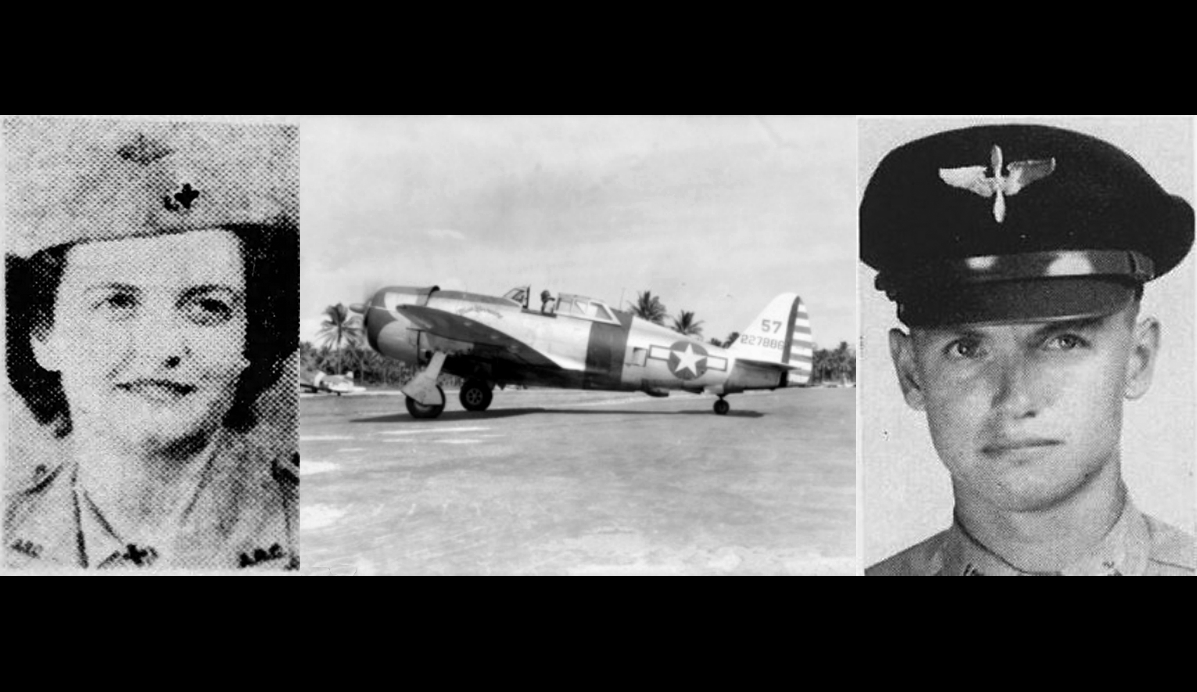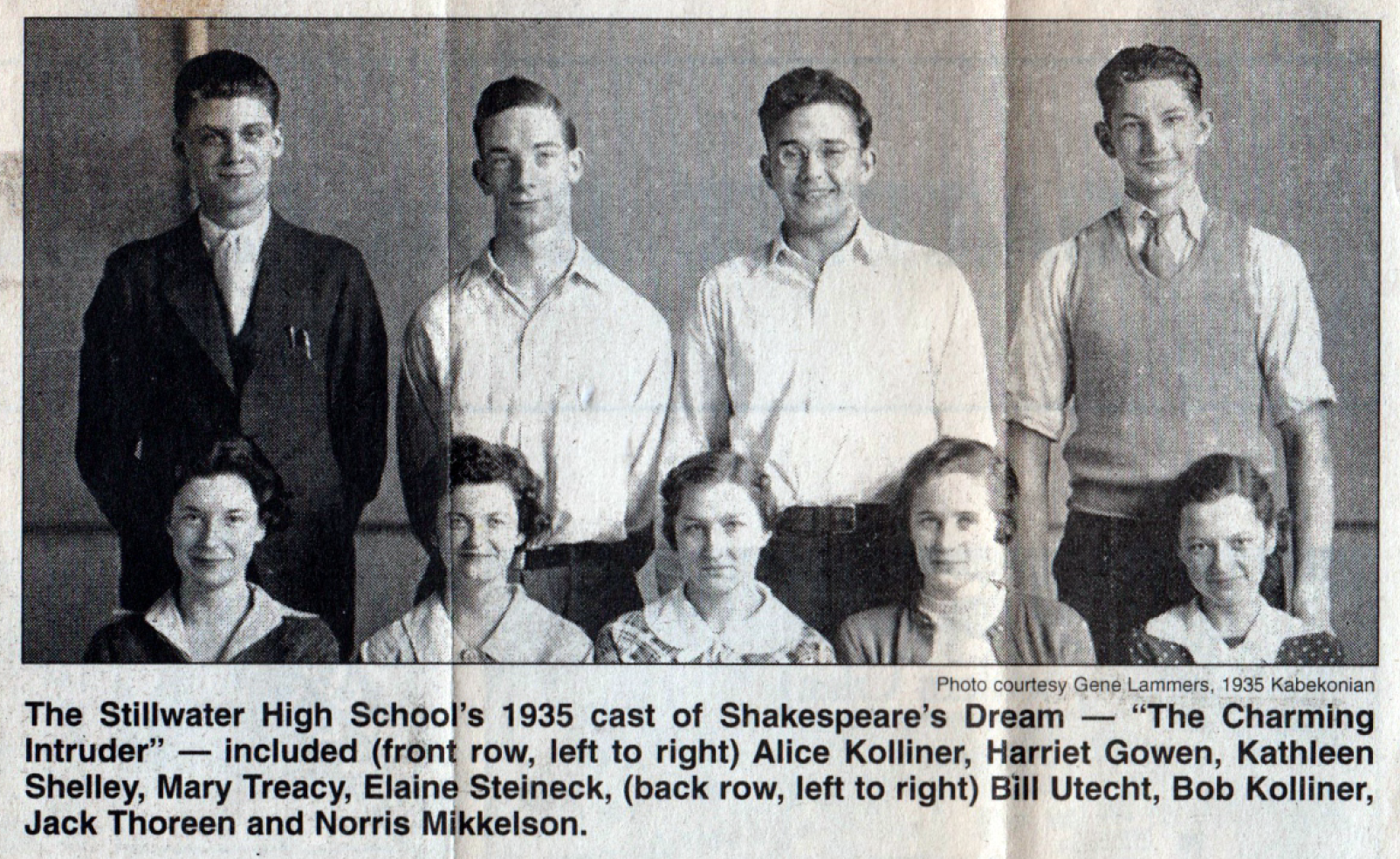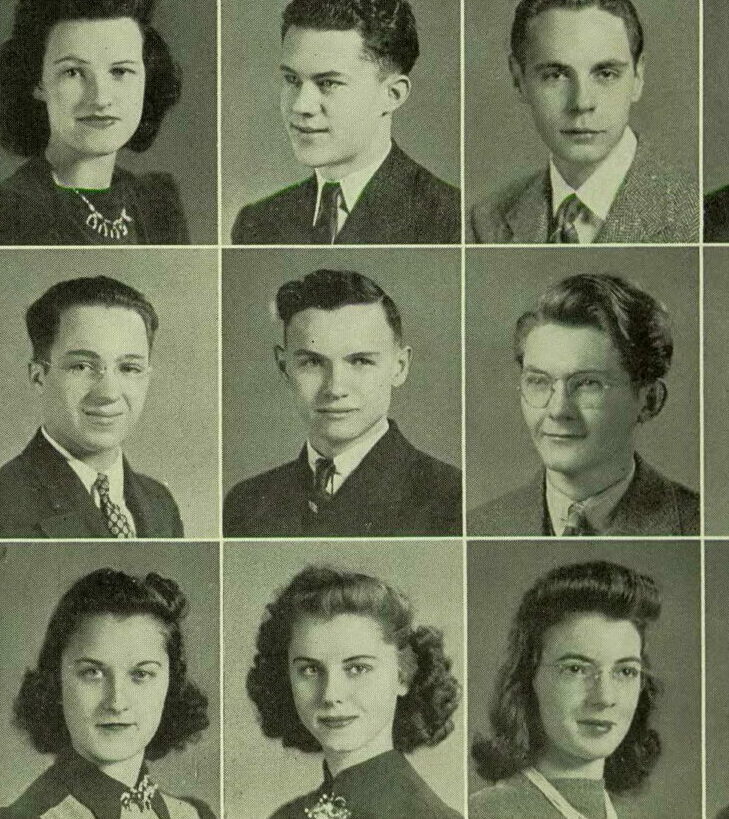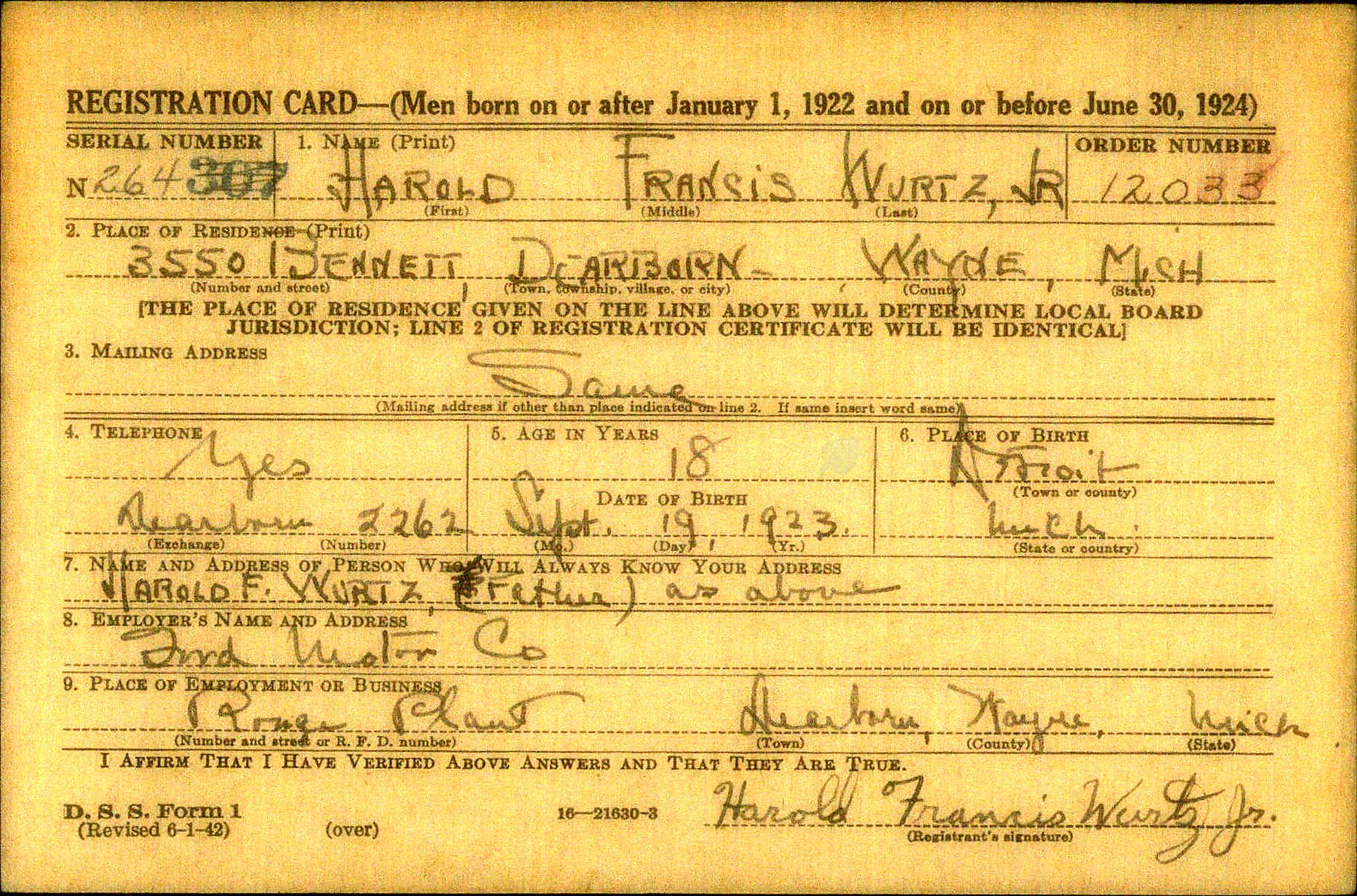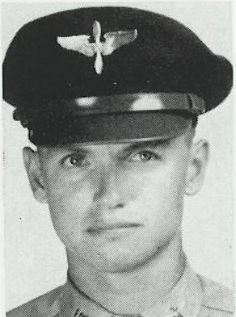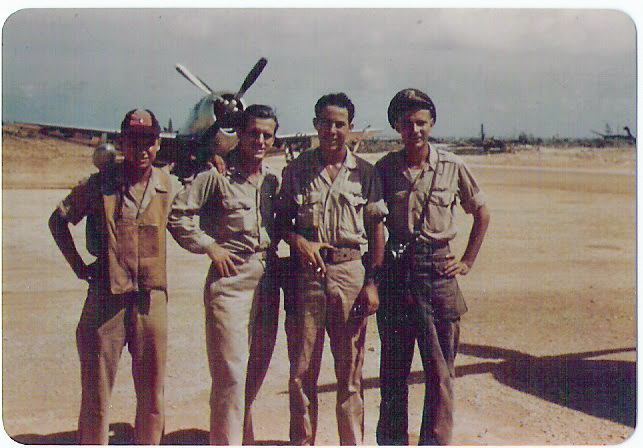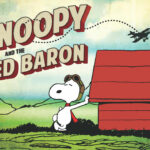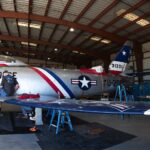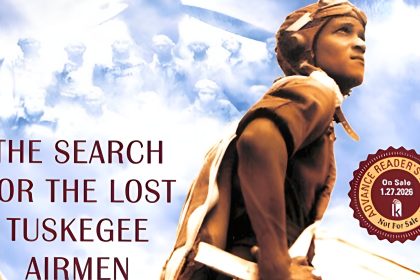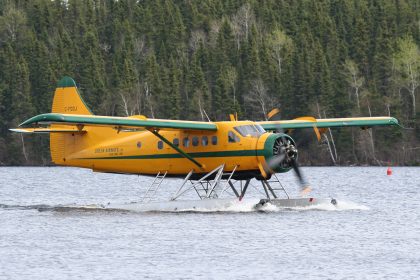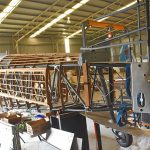by Matt Scales
On May 12th, 1945, a P-47 took off for a local flight from an airfield on the South Pacific island now known as Papua New Guinea. Sadly the excursion soon ended in tragedy, the out-of-control, single-seat fighter thumping at high speed into soft earth, disappearing – seemingly forever – beneath the dense jungle canopy. The Thunderbolt, P-47D-11-RA 42-22949, lay hidden for more than half a century before a local villager stumbled across its wreckage. Examination of the crash site yielded a surprise; two sets of human remains came to light, instead of just the one, along with a woman’s shoe. As officials began to dig, they recovered not only the fallen… they uncovered a love story too.
Harriet Elizabeth Gowen was born in Iowa on May 11th, 1917 and raised in Stillwater, Minnesota, about twenty miles east of Minneapolis. Fellow classmates described Harriet as outgoing and adventurous, traits reflected in her high school yearbook.1 Harriet belonged to several clubs during her senior year in 1935; she performed in two school plays as well.
After graduation, Harriet enrolled at the University of Minnesota, where her outgoing nature continued to shine.2 She joined a sorority, Kappa Kappa Gamma, and worked as a staff member for The Gopher, the university’s yearbook.3 For reasons presently unknown, Harriet left college a year before completing her degree, taking a job at Dayton’s Department Store instead.4 Meanwhile, a young man in Michigan began his sophomore year of high school.
Born in Dearborn, Michigan on September 19th, 1923, Harold Francis Wurtz Jr. graduated from Dearborn High School in 1941. He then followed a path which countless other Michiganders had already trodden, finding a position with the Ford Motor Company;5 his father also worked for Ford, as a timekeeper. But with the country soon engaged fully in WWII, Harold joined the U.S. Army, enlisting in Detroit, Michigan on October 13th, 1942.6
Wurtz wasn’t destined to serve in the infantry, however. Despite not having a college education, Harold’s aptitude test scores were sufficient to earn him a slot as an aviation cadet. So, in early 1943, the young man from the outskirts of Detroit boarded a train and headed south to Mississippi, where he reported to Greenwood Army Airfield to become an Aviation Cadet in Class 43-J. After graduation, Wurtz reported to single-engine school, where he gained the skills to become a P-47 Thunderbolt pilot. His next move proved highly consequential to what remained of his short life…
After spending most of 1943 in training, Wurtz reported to the 341st Fighter Squadron in the South Pacific. The squadron, part of the 348th Fighter Group, had been engaged in regular combat with the Japanese since June, 1943. As the fresh Lieutenant reported for duty, fate ensured his encounter with a young woman who shared a similar eagerness to serve America overseas.
As the USA’s involvement in WWII deepened, Americans repeatedly found new ways to serve their country; Harriet Gowen’s sense of patriotism, education and love of adventure presented a unique pathway for her own participation, via the American Red Cross. While the organization maintained strict entry qualification requirements, Harriet Gowen’s abilities and accomplishments checked every box. Applicants needed to be: “college graduates, at least 25 years of age, have stellar reference letters, pass physical examinations and have an outstanding personality.”7 After completing her training at American University in Washington, D.C., Gowen initially reported for a position in Manhattan, New York, working with U.S. military personnel shipping out to the European Theatre of Operations. While being in the big city offered its own adventurous opportunities, they were not enough to satisfy Gowen, whose high school classmates universally remembered her free spirit. Indeed Gowen wanted something bigger, so she volunteered for overseas duty. This new assignment would take Gowen to the opposite side of the world and connect her forever with the confident young fighter pilot.
By 1945, the island of New Guinea, just north of Australia, was no longer the dangerous combat zone it had been over the previous three years. The fighting had moved on to the Philippines, making life at Nadzab Airfield Number 1 almost peaceful. The airfield, nestled in a picturesque valley surrounded by jungle-covered mountains, had become a location where un-blooded pilots like Wurtz could gain experience flying over such terrain in relative safety before moving to a frontline unit in a similar terrain. The base had grown significantly since its initial construction, so large that it now housed numerous American Red Cross volunteers, some of whom served in medical roles while others staffed military recreation centers. It was at the latter where our young pilot and the adventurous nurse would meet.
While the details surrounding Harriet and Harold’s meeting remain a mystery, they clearly made a strong impression upon one another. Amongst a collection of pictures which Harriet Gowen kept with her belongings there was a picture of Wurtz with a caption which read simply “the hot pilot.” And likewise, Harold Wurtz had a photograph of Gowen upon which he wrote, “Our Red Cross worker.” Sadly, a fateful day in May 1945 would ensure that these two young Americans would remain together forever.8
At approximately 2 p.m. on May 12th, 1945, Lt.Wurtz borrowed a jeep and made his way over to Gowen’s tent. The two of them then drove to the airfield for an unauthorized adventure in the skies. Harriet Gowen had celebrated her 28th birthday a day earlier. Perhaps this was the reason why Wurtz offered Gowen a flight over the scenic Markham Valley, or maybe it was simply a romantic gesture – we will never know. The 21-year-old Lieutenant chose a P-47 which another pilot had recently landed. He removed the parachute from the pilot’s seat, climbed into the cockpit, and then assisted Gowen to join him; she sat on his lap. While this may sound like a crazy way to fly, it was not that unusual for the time, and could be accomplished without undue risk in most circumstances. Wurtz cranked the fighter’s engine and the two thrill-seekers took off, rising above the steamy jungle heat for the cooler climes at higher altitude.9
By 4 p.m., Wurtz’s squadronmates and Gowen’s fellow Red Cross workers began to notice their absence. Army Air Forces officials soon organized a search effort for the missing pair, an exercise which extended for three days. Interviews with other pilots revealed one who thought he had seen a P-47 spiraling out of control to the west of the airfield, but despite an intensive search, no trace of either the plane or its occupants turned up.10
Fast forward to 1996, when a villager named Moses Paul went hunting for wild boar near his home in remote area of Papua New Guinea. As he ventured deeper into the jungle, he caught sight of an old aircraft crash unknown to him. A superstitious man, Moses Paul reportedly raced back to his village and enlisted several others to help him investigate the site where they found evidence of human remains, along with Wurtz’s dog tags. American officials eventually learned of this development and sent a team to New Guinea for further investigation. They discovered what was left of the plane’s pilot and his unexpected female passenger – Harold Wurtz and Harriet Gowen could finally return home. As a forensics team sorted through what they had found, they could conclusively identify only some of the bones. Those which definitively belonged to Harriet were given to her family for burial in Stillwater, Minnesota. Meanwhile the fragments with inconclusive identity were placed alongside those of Lt. Harold Wurtz in a casket for formal burial at Arlington National Cemetery.11 Although their brief romance ended in tragedy, it seems only fitting that the Red Cross worker and her beau remain united forever in peace…
References:
1 “1935 Stillwater Grad Who Died in WWII Honored by Lions Club at Veterans Memorial,” Stillwater Gazette, March 25, 2005.
2 Stillwater High School, “Kabekonian,” 1935.
3 University of Minnesota, “Gopher,” 1938.
4 Minneapolis City Directory 1938 (Minneapolis, Minnesota: Minneapolis Directory Company, Publishers, 1938), pg 514.
5 Dearborn High School, “Pioneer,” 1941.
6 Enlistment Record for Harold Francis Wurtz, October 13, 1942.
7 “World War II: “Donut Dollies” & the American Red Cross” Delaware Historical and Cultural Affairs https://history.delaware.gov/ww-ii-donut-dollies-the-american-red-cross/.
8 “Harold Wurtz – Second Lieutenant, United States Army Air Corps.” Arlington National Cemetery: https://www.arlingtoncemetery.net/mystery.htm
9 Ibid., “Harold F. Wurtz, Jr. and Harriet E. Gowen,” Project Homecoming, https://www.projecthomecoming.org/stories/harry-and-harriet/
10 Missing Air Crew Report 14435.
11 “Harold F. Wurtz, Jr. and Harriet E. Gowen,” Project Homecoming, https://www.projecthomecoming.org/stories/harry-and-harriet/
Many thanks again to Matt Scales for this poignant story…







